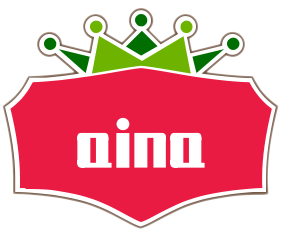Hyperswap appears to be a decentralized exchange ecosystem built on the HyperEVM chain with cross-chain, non-custodial swapping, plus an AI-powered routing layer in some variants.
Overview
Hyperswap is a DeFi exchange ecosystem that enables token swaps across multiple chains without custodial risk, often leveraging cross-chain liquidity and advanced routing to optimize trades.
Some materials describe it an AI-assisted routing layer to improve swap outcomes.
It is a Non-custodial trading, fast settlement, multi-chain reach, and opportunities to participate in governance and liquidity programs through native tokens.
What is Hyperswap
Hyperswap describes itself as a cross-chain, non-custodial swap platform designed to aggregate liquidity from various sources and optimize routes for best prices and lowest slippage.
It aims to provide fast execution with low fees, leveraging the underlying HyperEVM infrastructure and cross-chain bridges.
Notable features reported by multiple sources include cross-chain swaps, AI-augmented routing, and governance/staking components tied to a native token.
How it works
-
Cross-chain architecture: Routes trades across multiple chains to access broader liquidity, aiming for favorable rates and minimal slippage.
-
Non-custodial model: Users retain control of funds; trades execute directly from users’ wallets through connected interfaces.
-
Routing engine: Aims to identify optimal liquidity paths by aggregating multiple sources and, in AI-enabled variants, using AI to improve route selection and gas efficiency.
-
Tokenomics and governance: A native token often serves for governance rights, staking rewards, and participation in protocol economics.
What is HyperSwap’s core tokenomics and incentives
HyperSwap’s core tokenomics and incentives are built around a capped supply token designed to align long-term participation with ecosystem growth.
Here’s a concise, article-ready breakdown you can use, with emphasis on the key components you’ll want to verify against official docs for accuracy.
Core token model
-
Total supply: 100 million SWAP (reported across multiple summaries), with a structured allocation to support community, investors, liquidity, and contributors.
-
Token type: native governance/utilities token for HyperSwap on the HyperEVM network, used for voting on protocol upgrades, liquidity incentives, and potentially fee-related mechanisms.
-
Inflation/deflation plan: the project emphasizes a high-float, low-valuation approach initially to encourage broad access, with vesting schedules and potential burn or buyback mechanisms tied to protocol revenue or liquidity mining programs.
Distribution and vesting
-
Community genesis: a substantial early allocation to bootstrap user adoption and liquidity mining incentives; vesting schedules often span multiple years to promote long-term participation.
-
Investor genesis: a parallel allocation to early backers, typically with full unlocks at genesis or with staggered unlocks to reduce short-term selling pressure.
-
Core contributors and advisors: reserved portions with fixed cliffs and subsequent vesting periods to retain development talent and align with project milestones.
-
Liquidity mining: dedicated tokens set aside to reward liquidity providers, frequently with linear vesting over 2–3 years to sustain incentives and deepen liquidity.
-
Trading airdrops: a portion reserved to reward early adopters who engage with the platform post-genesis, with specific unlock timelines.
Liquidity and ecosystem incentives
-
Liquidity mining: a material share of SWAP allocated to rewarding users who provide liquidity, often distributed via a staged schedule (e.g., initial unlocks followed by ongoing releases) to maintain trading depth and reduce volatility.
-
Staking and governance: token holders can stake SWAP to earn rewards and participate in governance votes, steering protocol upgrades, fee structures, and feature roadmaps.
-
Revenue-backed model: some communications emphasize that a portion of protocol revenue supports tokenomics actions such as buybacks, burn events, or reserve-building to introduce value accrual over time.
-
xSWAP concept: a vesting variant of SWAP that can be redeemed 1:1 after a defined lock period, designed to encourage long-term commitment while offering early-stage liquidity for participants.
Airdrops and eligibility
-
Airdrop mechanics often involve actions like wallet connections, trading activity, or liquidity provisioning within a fixed window, with eligibility snapshots at defined points.
-
A notable feature in several disclosed models is that a portion of token emissions may be allocated to future airdrops or liquidity incentives, to reward ongoing participation.
-
Important security note: only rely on official announcements and verified partners for airdrop details; be cautious of impersonator announcements or scams.
Common questions you’ll likely encounter
-
Is the HyperSwap token worth participating in early? Early participation can grant governance rights and yield from liquidity mining, but as with all new tokens, it carries risk from price volatility, contract risk, and evolving utility.
-
Will there be audits? Reputable projects typically share audit results or third-party assessments; seek confirmation from official channels.
-
How is value preserved? Mechanisms like buybacks, burn events, liquidity incentives, and revenue-backed tokenomics aim to create demand pressure and long-term value.
Airdrop details (general guidance)
-
Airdrops for new DeFi projects typically involve tasks such as: connecting a wallet, performing swaps or liquidity provisions, following official channels, and sometimes completing KYC-lite or contact details. Specific steps, eligibility, and timing vary by campaign.
-
Important: Airdrop campaigns frequently change, and scams are common. Always verify details on official project announcements, verified social accounts, and reputable crypto news sources. Do not share private keys or seed phrases, and be cautious of unsolicited requests for wallet access or private information.
-
For Hyperswap, expect announcements around token distribution windows, required on-chain actions, and any snapshot-based eligibility. Confirm the exact steps from the official project site and trusted media.
Step-by-step participation (general framework)
-
Step 1: Confirm legitimacy
-
Visit the official Hyperswap site and official social channels to confirm the airdrop program and dates.
-
-
Step 2: Prepare the wallet
-
Use a reputable wallet compatible with the HyperEVM ecosystem and ensure you have sufficient funds to cover gas fees.
-
-
Step 3: Complete required actions
-
Typical tasks may include: linking the wallet to the platform, performing a small swap, providing liquidity to a pool, or participating in a governance vote. Some campaigns require following social accounts or joining a Telegram/Discord group.
-
-
Step 4: Monitor and claim
-
Track eligibility via official dashboards or announcements, and claim any eligible tokens within the stated claim window.
-
-
Step 5: Security checklist
-
Never share private keys or seed phrases.
-
Use hardware wallets when possible for large or long-term holdings.
-
Verify all contract interactions to avoid phishing or fake airdrop pages.
-
FAQ (typical questions)
-
Is Hyperswap legit? Many DeFi projects have legitimate communities and product milestones; always verify with official sources and independent coverage. Look for audit reports and on-chain data when available [source context dependent].
-
Do I need to KYC? DeFi airdrops and early participation often do not require KYC, but some campaigns may request basic information or ensure compliance with regional regulations.
-
What chains are supported? The platform aims to support multiple chains; specifics depend on current integration status and partnerships.
-
How are rewards distributed? Airdrop rewards are usually distributed to eligible wallets after the claim window closes, via a token contract on the relevant chain.
-
Are there risks? Yes. Smart contract risk, price slippage during swaps, and token price volatility during airdrop periods are potential risks. Diversify and do not stake more than comfortable to lose.
Conclusion
Hyperswap represents a cross-chain, non-custodial DeFi exchange approach with potential AI-augmented routing and governance dynamics.
Participation in any airdrop should be approached with careful verification of official announcements, understanding of eligibility criteria, and strict security practices.
As with all DeFi participation, perform due diligence, verify sources, and stay updated through authoritative channels to avoid scams or outdated requirements.

